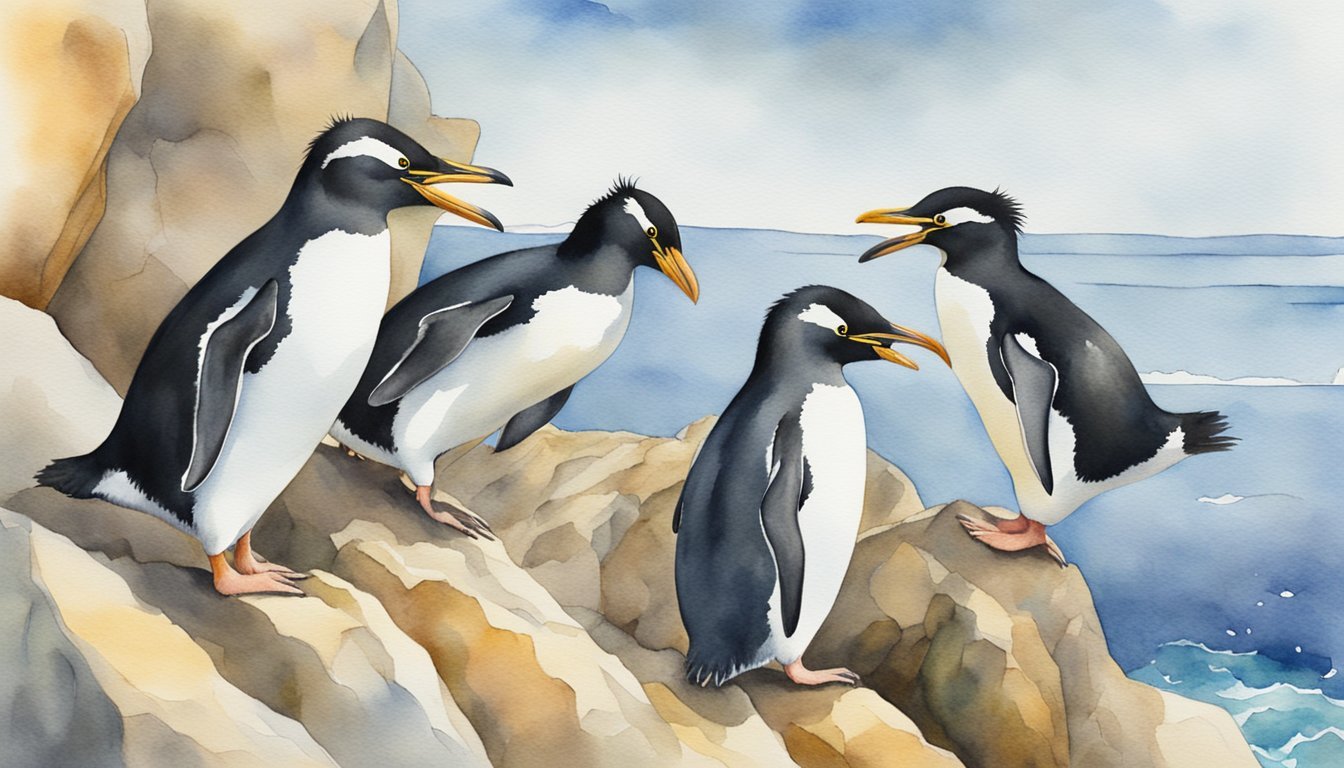Overview and Characteristics
Rockhopper penguins are a distinctive group within the genus Eudyptes, known for their unique appearance and dynamic behavior. Notable for their vibrant red eyes and flamboyant yellow-crested plumage, these birds are among the smaller, more agile members of the penguin family.
Physical Description
Rockhopper penguins are immediately recognizable by their bold, erect yellow feathers sprouting from their heads, akin to eyebrows, which contrast their black-and-white bodies. They typically grow to be about 20 inches tall and weigh between 5.5 and 6.6 pounds. Like other penguins, rockhopper penguins possess flipper-like wings designed for efficient movement through water rather than the air. The species showcase a striking facial appearance characterized by red-orange beaks and red eyes, which help distinguish them from close relatives like the macaroni penguin.
Subspecies Classification
Two primary subspecies of rockhopper penguins are identified: the southern rockhopper penguin (Eudyptes chrysocome) and the northern rockhopper penguin (Eudyptes moseleyi). The southern rockhopper has a global range spanning from the Falkland Islands to Cape Horn, while the northern counterpart is found in the Tristan da Cunha and Gough Islands. Both species share many physical traits, yet they can be differentiated by slight variations in their crest feathers and their distinct habitats. Despite their geographical separation, both subspecies display the tenacity and adaptability that are hallmarks of the crested penguins.
What Can the Habitat and Behavior of Adelie Penguins Teach Us About Rockhopper Penguins?
Studying adelie penguins in their natural habitat reveals vital insights into the adaptive behaviors of similar species, including rockhopper penguins. These behaviors, such as nesting patterns and social interactions, help researchers understand how environmental changes impact their survival, shedding light on the delicate balance of marine ecosystems they share.
Habitat and Behavior

The rockhopper penguins are distinctive, crested birds residing primarily on sub-Antarctic islands and are recognized for their unique and spirited behavior. This section delves into their foraging strategies, breeding rituals, and the conservation challenges they face.
Diet and Predation
Rockhopper penguins primarily feed on a diet of krill, squid, and various small fish that they catch in the sea. They are proficient divers, capable of plunging into the ocean depths to pursue their prey. However, these birds are not just predators; they also fall prey to marine animals. Seals, such as the leopard seal, and other large predators in the ocean, including sharks and killer whales, are known to hunt them. Even on land, their eggs and chicks are at risk from birds like gulls and skuas.
Breeding and Reproduction
The breeding season for rockhopper penguins is a bustling time of year. These birds form large colonies on rocky shorelines and cliffs of islands like Falkland Islands, Tristan da Cunha, and Macquarie Island, to name a few. Rockhopper penguins lay two eggs, but usually, only one chick survives. Parents take turns incubating the eggs in nests made from grass and stones. Once hatched, chicks are grouped together in crèches for protection while the parents forage for food.
Conservation and Threats
The future of rockhopper penguins, which includes the Eudyptes chrysocome and Eudyptes moseleyi species, is under threat due to several factors. These range from environmental issues like climate change affecting their food supply, to direct human impacts including oil spills and overfishing. Their populations have suffered significant declines, which has led to their status being listed as vulnerable or endangered on the IUCN Red List, depending on the subspecies. Consequently, conservation efforts are being made, focusing on protecting their habitats and the oceans around them from further pollution and degradation.

